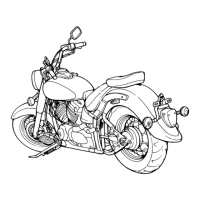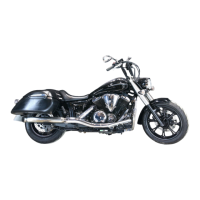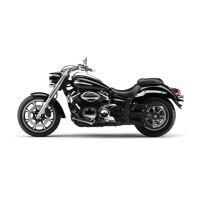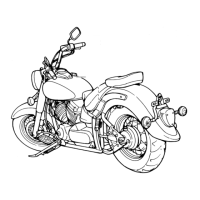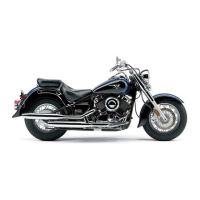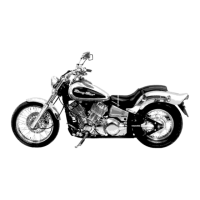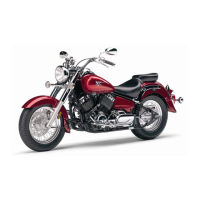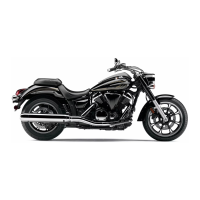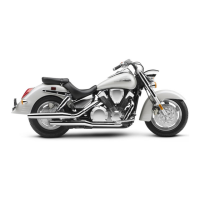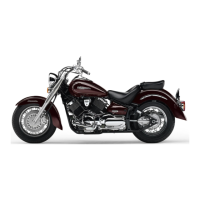Do you have a question about the Yamaha 2009 V Star XVS250X and is the answer not in the manual?
Details the placement and meaning of critical labels on the vehicle.
Provides essential data on tire pressure and specifications for safe operation.
Illustrates and identifies components visible from the left side of the motorcycle.
Illustrates and identifies components visible from the right side of the motorcycle.
Identifies and explains the function of various controls and instrument panel features.
Explains the operation of the ignition switch and steering lock mechanism.
Describes the function and meaning of dashboard indicator and warning lights.
Details speedometer, odometer, and tripmeter functions for tracking speed and distance.
Explains the function of switches located on both left and right handlebars.
Details the operation and function of the clutch lever, including its safety switch.
Explains how to operate the front brake lever and rear brake pedal for effective braking.
Covers fuel tank cap and fuel level checks, recommended fuel types, and capacity.
Describes the ON, RES, and PRI positions of the fuel cock lever for fuel delivery.
Explains choke operation for cold starts and the function of the helmet holder.
Details shock absorber preload adjustment and sidestand operation.
Explains the safety functions of the ignition system related to the sidestand and clutch.
Lists essential checks to perform before riding the motorcycle for safety and reliability.
Guides on procedures for starting cold and warm engines, including safety precautions.
Explains how to operate the transmission for optimal performance and control.
Offers tips for fuel efficiency and outlines the critical engine break-in period.
Provides instructions and safety warnings for parking the motorcycle correctly.
Identifies the location and purpose of the tool kit for basic maintenance tasks.
Outlines the recommended service intervals for various motorcycle components.
Provides step-by-step instructions for safely removing and reinstalling motorcycle body panels.
Details how to check, clean, and replace spark plugs for optimal engine performance.
Explains how to check, change engine oil, and replace the oil filter element.
Guides on how to clean the air filter element to ensure proper air intake for the engine.
Guides on adjusting the carburetor and engine idling speed for optimal performance.
Explains how to check throttle cable free play and the importance of valve clearance.
Details tire inspection, air pressure, and wear indicators for safe riding.
Covers checks for brake pad wear, shoe wear, and brake fluid level.
Explains how to check slack, clean, and lubricate the drive chain for longevity.
Covers procedures for removing and installing front and rear wheels.
Offers guidance on diagnosing and resolving common motorcycle operational issues.
Advises on special care for matte finished parts to prevent damage.
Provides instructions for washing and cleaning the motorcycle to maintain its appearance.
Offers advice for both short-term and long-term storage to protect the motorcycle.
Explains where to find key and vehicle identification numbers for reference.
Locates the model label and details motorcycle noise regulations.
| Displacement | 249 cc |
|---|---|
| Transmission | 5-speed |
| Final Drive | Chain |
| Front Suspension | Telescopic fork |
| Front Brake | Single disc |
| Rear Brake | Drum |
| Seat Height | 690 mm |
| Ground Clearance | 140 mm |
| Bore x Stroke | 49.0mm x 66.0 mm |
| Fuel System | Mikuni BDS26 |
| Rear Suspension | Swingarm |
| Engine Type | Air-cooled, SOHC, 4-stroke, V-twin |
